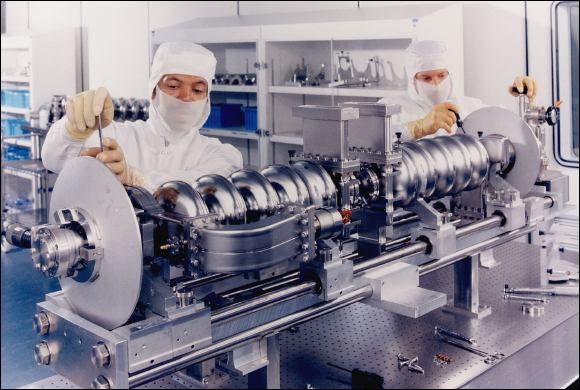Jefferson Lab Site Tour
How does the accelerator work?
Jefferson Lab's accelerator makes electrons go faster by placing negative charges behind them and positive charges in front of them. Since electrons have a negative electrical charge, they are repelled by the other negative charges and are attracted towards the positive charges. Devices called cavities, like the two shown in the photo, are used to place positive and negative charges around the electrons in the beam.
Cavities are hollow shells made from the element niobium. Jefferson Lab's accelerator uses 338 cavities, mostly in the two long, straight sections. Microwaves are directed into the cavities and cause the electrons in the niobium metal to concentrate in certain areas. Since these areas have extra electrons, they become negatively charged. Other areas of the cavities have too few electrons, so they become positively charged. The electrons in the beam are pulled towards the positively charged areas and are pushed away from the negatively charged areas. [See Diagram]
Since the electrons in the beam are moving at nearly the speed of light, the microwaves must cycle the positions of the charged areas 1.5 billion times a second. This ensures that the electrons in the beam will always have a positively charged area ahead of them and a negatively charged area behind them.
Citation and linking information
For questions about this page, please contact Education Web Administrator.

